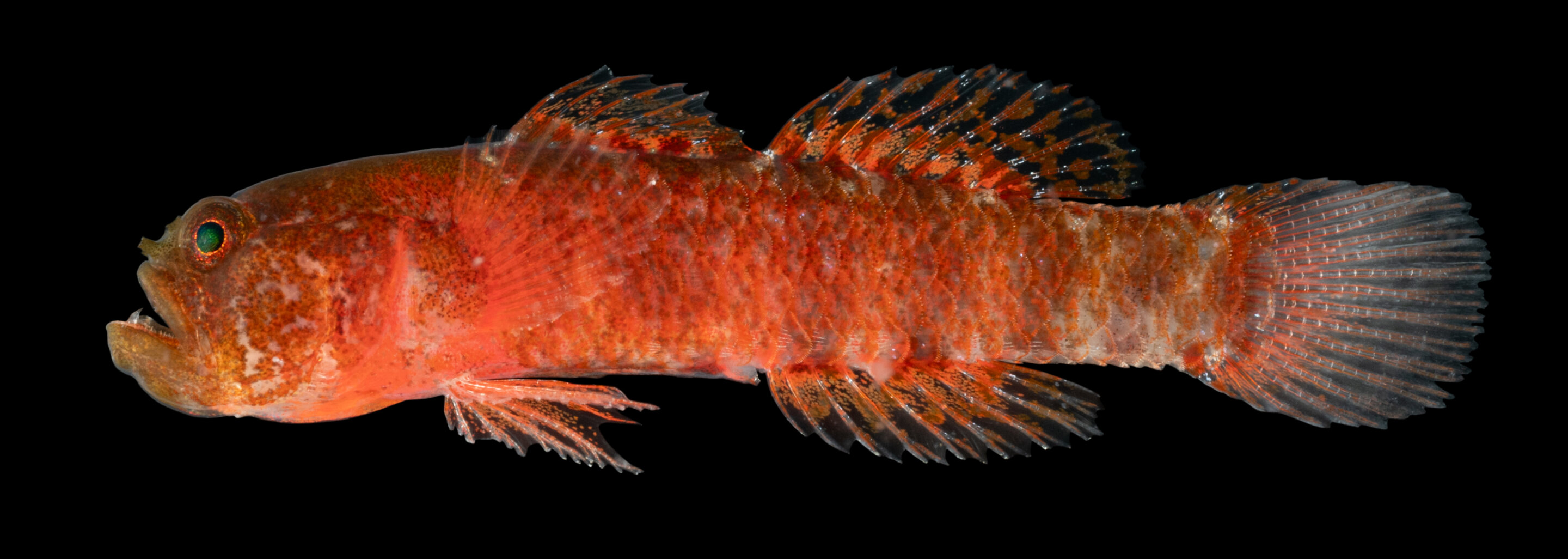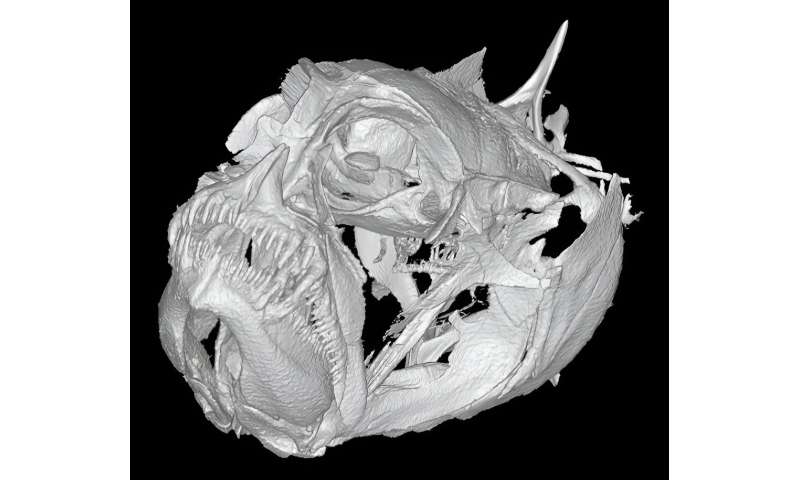Follow us on Google News (click on ☆)
This small creature, measuring barely two centimeters (about 0.8 inches), has been named the "grumpy dwarf goby" for its threatening and unusual appearance. Its face always seems irritated, adding to the mystery of its discovery.

The grumpy dwarf goby, Sueviota aethon.
Credit: Viktor Nunes Peinemann
Lucía Pombo-Ayora, one of the lead researchers, describes its intimidating appearance despite its small size. This bright red fish, hidden among coral algae, appears to be a fearsome predator in its tiny underwater world.
Thanks to its vivid red coloration, it blends perfectly into its habitat: the walls and overhangs of coral reefs, often covered in red algae. Its large canine teeth allow it to capture small invertebrates, its primary food source.
The rarity of this species, named Sueviota aethon, could explain why it had never been observed until now. The first discovery occurred in the waters of the Farasan Bank, in Saudi Arabia, with other specimens found in the Red Sea near Thuwal.
Viktor Nunes Peinemann, one of the researchers involved in this discovery, emphasizes the importance of studying the biodiversity in this region. The Red Sea is a veritable reservoir of unique marine life, and new species like this goby continue to be discovered there.

Scan of the skull of the grumpy dwarf goby, Sueviota aethon.
Credit: Viktor Nunes Peinemann
Initially, the researchers thought they had found a related species, the flaming dwarf goby, discovered in 1972. However, after further analysis, they realized that it was a completely new species to science.
Discoveries like this highlight the crucial role of marine biology research, especially in the context of rapidly changing climates. The Red Sea has already suffered numerous ecological upheavals, including episodes of mass coral bleaching.
For scientists, it is urgent to continue studying this exceptional biodiversity before it disappears due to environmental disturbances. Their study was published in the journal ZooKeys.